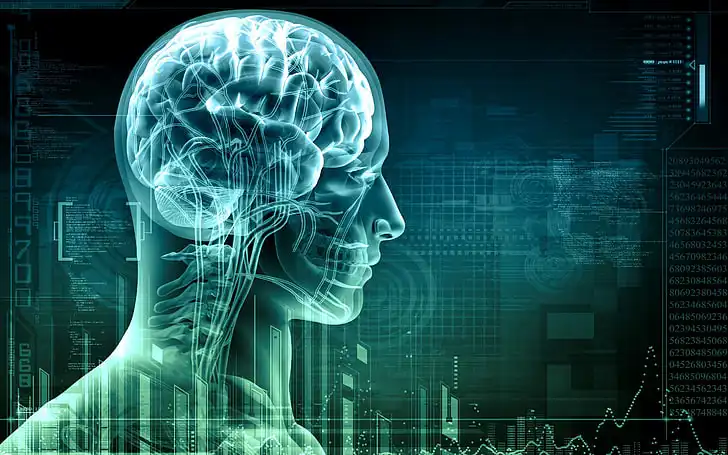Jeffery Katzenberg, co-founder of DreamWorks Animation, has made a prediction that reverberates through the animation industry. While technology has always been a driver in animation, Katzenberg anticipates that it is set to effectively topple the apple cart. His forecast? That Artificial Intelligence (AI) is primed to take forth 90% of the jobs in the animation field.
One may wonder how Katzenberg arrives at this prediction. If anything, AI is an enabler in the animation realm, aiding in enhancing details, fast-tracking processes, and sharpening the picture that sees the light of day. But now, it seems this helpful hand could soon replace the human touch, signaling a definite shift in the industry landscape.
AI, with its ability to carry out tasks that require problem-solving, learning, perception, and language understanding skills, is revolutionizing industries across the board. However, the animation industry, with its detailed and intricate processes, may fear its penetration due to the potential job losses it insinuates.

Current animation production requires a hefty amount of manpower, valuable time, and immense effort. With traditional animation, each frame is hand-drawn, a laborious process ripe for technological intervention. Moreover, technology has been an integral part of animation, helping it evolve from 2D cartoon cells to hyper-realistic 3D images.
Indeed, AI has already made significant inroads into animation. Algorithms help refine details in CG films, contributing to the overall quality of the final product. Projects like Google's DeepDream and the Artificial Intelligence applications in Studios such as Disney and Pixar have begun to test the waters of this new era.
Further, AI enhances productivity by taking over monotonous tasks from animators, giving them the freedom to focus on creativity. AI tools can automate processes such as in-betweening and cleaning-up to save time. Also, Machine Learning can detect patterns, speed up rendering, and improve graphical fidelity while recognizing and correcting errors.
Yet Katzenberg's prediction is a chilling reminder of the implications of AI advancement. While it may automate tasks, there's the fear of it replacing human intelligence altogether. Unique styles and artistic expressions that come from human experience might be lost, replaced by AI's cold efficiency.
AI’s potential to replace many jobs in the animation industry is no longer conjecture. If Katzenberg’s prediction holds true, it will displace a significant amount of animators. This threat to livelihood cannot be disregarded.
Katzenberg, a veteran and pioneer in the animation industry, has seen the evolution of animation first hand. His career spanning from Disney Renaissance to the birth of DreamWorks Animation demonstrates his deep knowledge about animation production and its future.
His sentiments echo the larger debate about AI and machine learning: whether it’s an assistant or an adversary. In the digital age where every industry is learning to incorporate AI, it’s an ever-relevant discourse. Representatives of technical enterprises like OpenAI agree with Katzenberg's opinion, stating automation will indeed supplant many jobs.
Of course, the transition won't be immediate. Just like every technological leap, it takes time for industries to reorient themselves. But if the change is inevitable, the narrative needs to shift from 'how to stop it' to 'how to adapt to it.'
An idea proposed by many is reskilling. Workers should prepare for the possible changes and equip themselves with the necessary skills for the impending transition. They might need to adapt to a world where AI and human collaboration is the new norm.
Governments and companies need to facilitate this shift, providing sufficient support for workers to transition smoothly. Contingency plans and alternative job opportunities should be explored. The adaptation to a new work landscape might be imminent, but there's no need for it to be painful.
Yet, there's another side to this coin. AI bringing change to the animation industry is not necessarily a negative shift. While it may lead to job losses in one area, it could unknot opportunities in others. For instance, there will be a need for animators competent in using AI toolsets, creating a new demand in the job market.
AI might change the industry's focus from tedious tasks to unleashing human creativity, bearing potentially marvellous results. Artists may shift from executing mundane tasks to more innovative roles, increasing the entertainment value of animation.
Another perspective is that AI, while capable, cannot diminish the magic of human artistry. Each artist brings a unique voice and creative flair that can’t be imitated, not even by the most advanced AI algorithms. Thus, although AI can automate tasks, it cannot replicate the human touch.
Ultimately, the apprehensions around AI's role in the animation industry reflect the broader workforce's anxieties. They underpin a need to strike a delicate balance between embracing technological advancements while preserving the humanistic essence of certain professions.
In conclusion, while Katzenberg’s prediction of AI growing in the animation industry sounds alarming, it also opens up an era of dialogue and exploration. There are definitely challenges on the horizon, but artistically or otherwise, there's an opportunity for growth and transformation too.